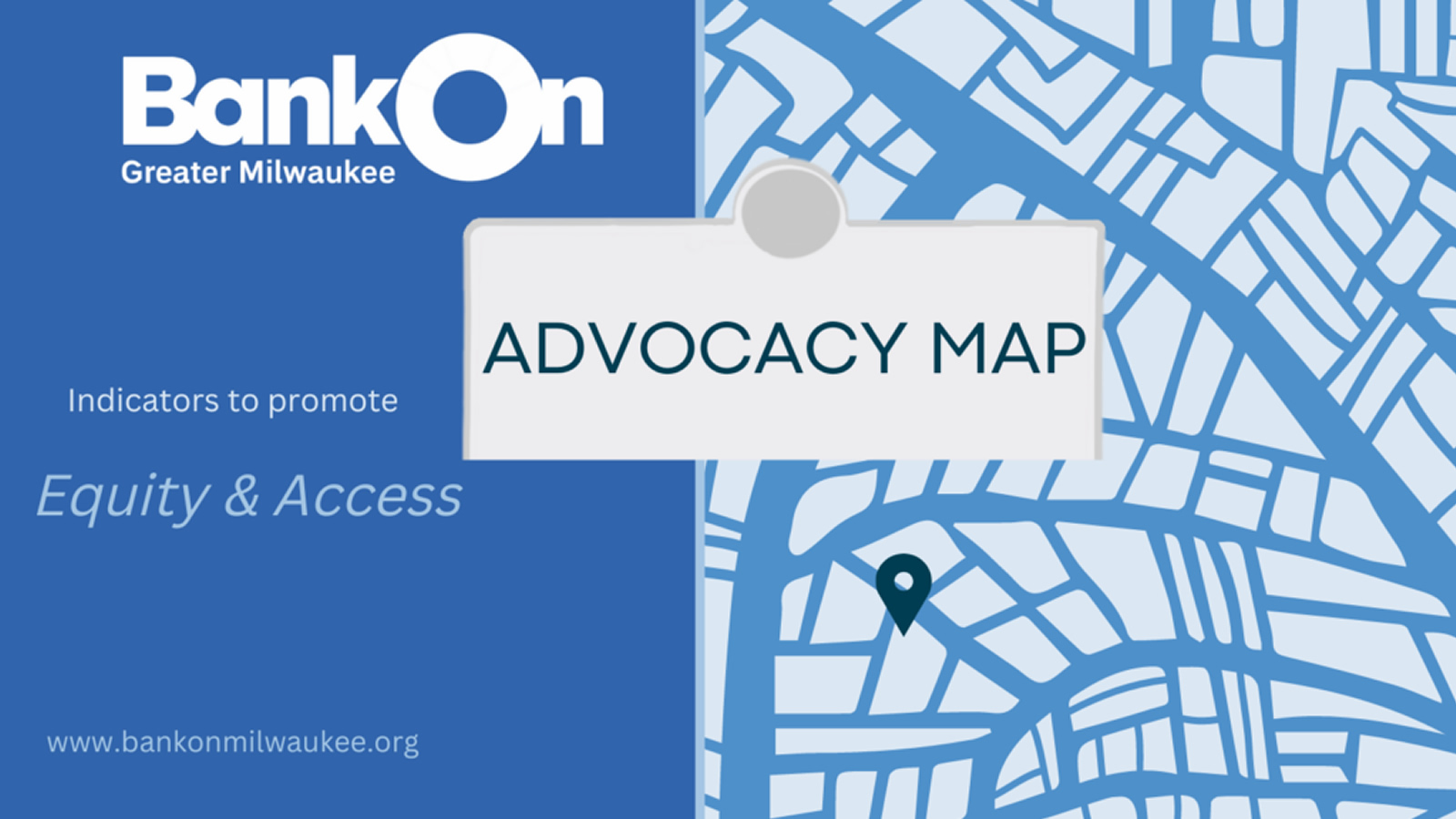In 2022, Bank On Greater Milwaukee launched the Advocacy Map to advocate for banking expansion and to improve access to banking in the City of Milwaukee. The Advocacy Map is a live interactive map of the City of Milwaukee along with the location of banks and payday lending stores and their service areas. The map shares local data and the intersectionality of data from the 2020 census including population by race and ethnicity, persons with disabilities, household income, household vehicle access, employment, and linguistical isolation.
Data included in the Advocacy Map includes the 2019 American Community Survey.
“The Advocacy Map is a tool for citizens, banks, and decision makers to understand the financial landscape of Milwaukee and help showcase the financial pitfalls and traps for low-income Milwaukeeans.”
-Kate Madison, Advocacy Map Coalition Committee Leader
What is the purpose of the map?
Bank On Greater Milwaukee began working on the Advocacy Map in 2020 to create a tool that could display the gaps in accessing financial products and services. It also serves as a tool for financial institutions to better understand which populations are being underserved, and help banks and financial institutions fulfill their obligations as partners and through the Community Reinvestment Act (CRA).
In particular, the Advocacy Map highlights the number of unbanked individuals, where they are, and how low-income individuals are most negatively impacted by a lack of banking access. Individuals who are unbanked are defined as individuals without a banking relationship which includes a checking account or credit card.
The Advocacy Map showcases data such as:
- Concentration and location of households with low to moderate income
- Where bank locations are within the City of Milwaukee
- Where payday lenders are in the City of Milwaukee
- Concentrations of linguistic isolation
- Households without vehicle access
- Intersectionality between all metrics such as low-moderate income households and a lack of banking options
Implications for this data include evidence to support increased funding and outreach to help more individuals become banked and access other financial products and services that help them become financially healthy.
Who is the map for?
This map is for multiple audiences including:
- Consumers who are looking for a bank branch nearby
- Consumers who are looking for a certified banking account
- Consumers who are looking to understand the financial landscape of their community
- Community partners who are looking to understand the needs of low-income individuals as it relates to banking access
- Financial institutions who are looking to address inequity
- Financial institutions who are looking to understand community needs
- Financial institutions interested in working in collaboration with Bank On Greater Milwaukee
- Decision makers and elected officials looking to understand Milwaukee data related to banking and low-income individuals
- Decision makers and elected officials looking to create policies
“This map shows many financial desserts across Milwaukee and is a tool to fight inequity”
Constance Alberts, Bank On Greater Milwaukee Program Manager
Future Considerations
The Advocacy Map will be updated with new data as well as other relevant data as it becomes available. Bank On Greater Milwaukee is working with its partners to use the data and information found in the Advocacy Map to inform access to banking. Our Coalition members are working on strategically addressing issues in banking access, and some of our next steps will be to address guidelines and the reduction of barriers that will help vulnerable people access banking products and services based on their needs.
How was it created?
Bank On Greater Milwaukee started working on this tool after identifying the need for data to understand and showcase the number of unbanked Milwaukeeans. The Advocacy Map idea was overseen by Constance Alberts, Bank On Greater Milwaukee Manager. Together, Bank On worked with stakeholders and members to create the Advocacy Workgroup to oversee this work. This Advocacy Workgroup included Kate Madison, Dan Krohn, and Brittany Thome.
Bank On Greater Milwaukee strategically met with many groups in the formulation and planning process including persons with disabilities, diverse groups, economic development groups, banks, and others. Special thanks to the Coalition for their work and all of the over 50+ groups and individuals therein that participated in helping make the Advocacy Map a possibility.
How You Can Help
- Share this blog post with your networks!
- Spread the word and share the Bank On Advocacy Map using our Social Media Resource page
- Link the Bank On Advocacy Map to your website
- Join Bank On Greater Milwaukee as a partner to help support their work
- Volunteer with the Advocacy Map Coalition
Questions or interested in getting involved?
Email Constance Alberts, Bank On Greater Milwaukee Program Manager at constance@uedawi.org!




 (414) 562-9904
(414) 562-9904
 1915 N Dr. Martin Luther King Drive
1915 N Dr. Martin Luther King Drive